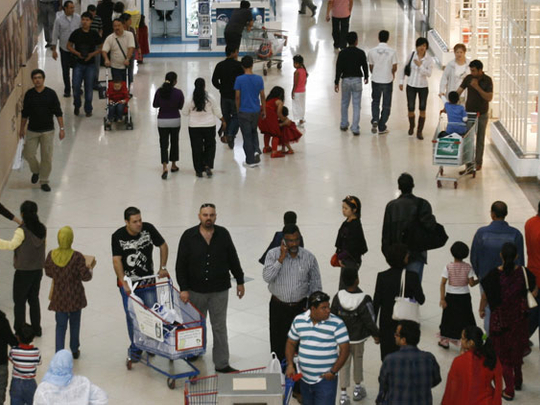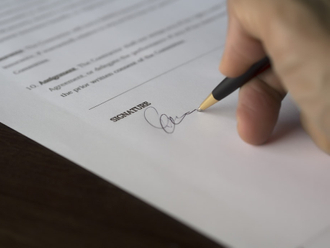
Tareq Malek acquired his first luxury wrist watch when he was in grammar school in Germany years ago. It was a simple accessory, a manual-winding Rolex that set him back Dh2,000.
Now, 17 years later, the watch which he still proudly wears, is valued at Dh15,000. “It has gone up seven to eight times, so if I sell this today, I could make money from it,” he says.
The Dubai-based expatriate, who now specialises in vintage luxury watches and co-owns a store called Momentum at the Dubai Financial Centre, is one of those discerning individuals who believe that luxury goods are not just frivolous purchases made to satisfy a desire for social prestige, they’re an asset class worth considering.
His fascination for luxury dates back to when he was 16. At the prodding of his brother, he started a small business on the side while studying. He would show up at trade events in hotels on weekends, carrying a bag full of timepieces made by Swatch, which was considered a rarity at that time.
The young entrepreneur quickly learned that people were more than willing to spend a premium on a label — on something rare and special. Over a brief period, Malek saw his investment more than triple.
“There was a collector’s hype over the brand back then because the supply was very limited. So I would buy and sell the items for a good profit,” he recalls. When Swatch flooded the market with mass-produced pieces, Malek moved on to trade other sought-after brands. In the years he’s been in the business, he has witnessed resale prices of luxury pieces soaring to record highs, so he would advise customers keen in long-term investment to consider them, too.
Value
“Looking at the brands today, I can say there are few ones which are recommended to buy in terms of making an investment. I’ve noticed that in the last four or five years, for example, vintage high-end luxury watches have accelerated. Their values are really skyrocketing,” says Malek.
The worldwide luxury goods market, which now tops €200 billion (Dh961 billion), is forecast to grow as much as 50 per cent faster than the global gross domestic product this year. The growth is fuelled primarily by the huge appetite of the world’s affluent, especially the brand-hungry.
Luxury labels are a big deal for most of the wealthy not because they make profit from the purchase, but because carrying expensive logos make them feel good and help them gain social prestige. Many of them share the popular view that the things people buy for self-fulfillment are all depreciable assets.
Basic economic principles do dictate that the minute a new car is driven out of the sales lot, it loses 20 per cent of its value. The same rule may apply to a Tiffany diamond ring, a Louis Vuitton purse emblazoned with the brand’s iconic monogram or a pair of Louboutin pumps.
But there are exceptions to the rule, and brand connoisseurs are proving that luxurious goods are no longer just an extravagant eye candy that the well-heeled love to show off. In fact, a good choice of watch made by Audemars Piguet, Patek Philippe and Officine Panerai can offer a good return over the long term.
One of the high-profile second-hand sales to come up this year from the watch world is the first ever timepiece specially adapted for James Bond. The Breitling watch, originally bought for only about $35 (Dh128) at a backyard sale and worn by Sean Connery in the 1965 movie Thunderball, was sold for more than $160,000 (Dh587,000) at Christie’s last month.
“All of the items we handle are luxury items and their value can increase over time. [For example], sold last November for $3.6 million (Dh13 million) was a beautiful platinum watch by Patek Philippe and felt by connoisseurs to have the perfect combination of design, functions, mechanical complexity and case proportions,” says Frederic Watrelot, Christie’s specialist for Jewels and Watches in Dubai.
It’s not only watches that can lead to excellent returns in the long run. In the world of jewellery, a ruby and diamond necklace by Cartier that was valued at $200,000 to $300,000 (Dh734,000 to Dh1.1 million) fetched a whopping Dh13.5 million at a Christie’s auction in 2011. The fact that it was formerly owned by Elizabeth Taylor played a part, but so did the brand.
Automobiles
Car enthusiasts are dropping a fortune on fine automobiles in the hope of making a profit in the future. According to figures released by the Historic Automobile Group International, some fine classic cars produced by luxury brands have outpaced the returns on gold and equities.
In terms of value growth, one of the best performing automobiles, the Bentley R-type Continental Fastback, 1952-55 (208 produced), jumped from £400,000 at the start of 2011 to £500,000 plus by year end.
In the fashion accessories sector, a good choice of designer bag could be worth the investment, too. Reema Al Khomeiri, a Lebanese owner of ToujoursChic, which buys and sells pre-loved luxury bags and accessories in the UAE, swears by the value appreciation of certain brands.
She says that since famous fashion houses, the likes of Louis Vuitton, Gucci, Chanel or Hermes, are jacking up their prices every year, a purse bought years ago can be resold for a high price.
Handbag fans were stunned recently when a red crocodile skin Hermes Birkin bag set a world record in 2011 and sold for an outrageous amount, a little over $203,000 (Dh746,000), at the Heritage Auction in Dallas, Texas.
“A bag by Hermes can offer a good return. Let’s say you bought an Hermes bag two years ago for Dh38,000, right now I can guarantee that you can resell it for Dh38,000 even if you’ve already used it,” adds Al Khomeiri.
Not all luxury brands will guarantee value appreciation, though. The secret is to shop smart and to have a keen eye for excellent quality and rarity.
Good investment
“There are expensive brands that just perform poorly in the resale market. But if you choose carefully, I’d say you’ll make a good investment,” says Al Khomeiri.
Connoisseurs like Al Khomeiri know that the best buys that promise financial rewards are not always found on the shelves. They’re the ones that luxury fans hype about and wait-list for. Most likely, you’ll have to scour the aftermarket for them and prepare to spend a premium.
“Let’s say there’s so much hype about a bag by Hermes in a rare shade of pink, you won’t see them in the store. You’ll probably get them from resellers and they would cost a fortune. If the bag is retailed for Dh38,000 in the boutique, it’s being resold for Dh60,000,” she says.
But even if you don’t get the full investment back when you resell your expensive accessory, most designer goods hold their value better than ordinary brands, so that if you sell them in the second-hand market, you’re more likely to recoup a good proportion of your capital.
“You don’t just get the pleasure of owning a piece of luxury, you get back a portion of your investment, so you don’t really lose money,” says Al Khomeiri.
A simple Chanel classic bag purchased in 2010 for Dh11,000, can still be sold in the second-hand market today for Dh8,000. “Come to think of it, you bought the bag for like Dh11,000, used it for three years and now you’re selling it for Dh8,000. You can’t do that with any other brand. You’ll probably make less money if you sell that piece of gold jewellery you bought a while back,” says Al Khomeiri.
As tempting as it sounds, investing hard-earned money in luxury goods must be approached with caution. Financial advisers aren’t quite a fan of high-end brands, saying that luxury goods are nothing but a display of wealth.
Risk
Sure, some exceptional creations of iconic logos might hold or increase in value over the long term, but the risk of losing money is high.
Unlike shares of stocks, gold bars or a life insurance policy, the designer goods purchases are driven largely by personal choice and the desire for having something in a particular culture or community, according to Ashok Sardana, managing director of the Continental Group.
“People purchasing these items very rarely have an intent of gaining returns on the amount spent. Yes, at times they may turn out to be a good investment, however, there is no defined valuation methodology or a body that governs trade of luxurious items,” Sardana argues.
“Watches can be a good investment, but so could a car, if you choose the right type, but almost all the new cars depreciate the moment you drive them out of the forecourt. It’s not to make money, but to show the world that you have arrived. This is precisely why people buy bags with LV written all over it.”
“The bottom line is that it can get a little complicated and there is a very small group of people who understand this market, and it’s clearly not meant for everyone,” he added.
If you are looking at investing money, there are a lot other platforms you can use. One can invest in mutual funds, stocks, commodities or systematic investment plans.







